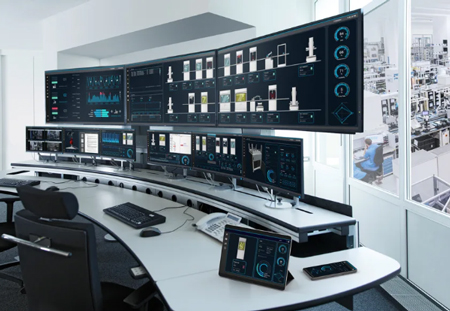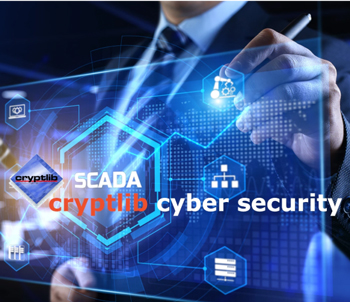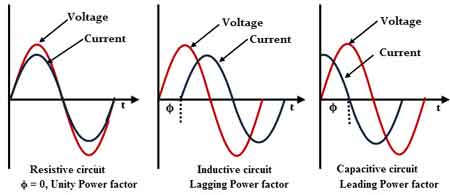SCADA Cybersecurity
By R.W. Hurst, Editor

Download Our OSHA 4474 Fact Sheet – Establishing Boundaries Around Arc Flash Hazards

- Understand the difference between arc flash and electric shock boundaries
- Learn who may cross each boundary and under what conditions
- Apply voltage-based rules for safer approach distances
SCADA cybersecurity protects industrial control systems from cyber threats, ensuring safe, reliable grid operations. It prevents unauthorized access, malware, and data breaches in energy, water, and utility infrastructures.
What is SCADA Cybersecurity?
SCADA cybersecurity focuses on defending Supervisory Control and Data Acquisition systems against cyber risks. It safeguards operational continuity and public safety in critical infrastructure.
✅ Protects SCADA systems from cyberattacks and unauthorized access
✅ Ensures reliability of electrical grids, water treatment, and gas networks
✅ Prevents malware, ransomware, and data breaches in OT/ICS networks
The Growing Importance of Industrial Security
As critical infrastructure grows more connected, protecting supervisory control and data systems from cyber threats becomes essential. Once isolated, these control environments are now digitally linked to corporate networks, exposing them to sophisticated cyber attacks. SCADA cybersecurity isn’t just a technical concern—it’s a fundamental requirement for safety and operational continuity. If you're new to the subject, start with this in-depth introduction that answers the fundamental question: what is SCADA?
Control and data acquisition systems enable operators to monitor and control complex physical processes remotely. But the same capabilities that allow for remote control, automation, and real-time diagnostics can also be exploited by adversaries. Without proper protections, attackers can gain access to core systems and cause physical or financial damage.

Inherent Weaknesses in System Architecture
Legacy systems were never designed for cybersecurity. Many data acquisition SCADA systems in use today still rely on outdated hardware and software with little to no ability to authenticate users or encrypt communications. These environments operate under assumptions of physical isolation, leaving them highly vulnerable once network boundaries are crossed.
Sign Up for Electricity Forum’s Smart Grid Newsletter
Stay informed with our FREE Smart Grid Newsletter — get the latest news, breakthrough technologies, and expert insights, delivered straight to your inbox.
Cyber threats take many forms. Some rely on remote access exploits or phishing to infiltrate a system, while others directly target programmable logic controllers (PLCs), sensors, and engineering workstations. Even attacks that appear subtle—like falsifying readouts while processes are sabotaged—can have widespread effects. One famous historical case demonstrated how attackers could manipulate control code while masking the changes from operators, highlighting how difficult such intrusions can be to detect. For a clear explanation of core components and data flow in control systems, see our guide on how does SCADA work.
Limiting Risk Through Segmentation and Visibility
One of the most effective strategies for defense is strong network segmentation. Separating critical control systems from corporate IT networks limits the damage an attacker can do once inside.
Security teams should:
-
Create isolated zones for PLCs, HMIs, and historian servers
-
Use secure gateways for data acquisition systems
-
Prevent direct links between external networks and core SCADA networks
-
Maintain updated network diagrams showing all connected devices and communication flows
These practices reduce the attack surface and enable focused monitoring of each zone.
Managing Remote Access and Privileges
While remote access enables operators and engineers to perform diagnostics or updates without being on site, it’s also a prime entry point for attackers. Secure remote access must be enforced through encrypted VPNs, jump servers, and multi-factor authentication. All remote sessions should be logged and monitored for anomalies.
Access controls should follow the principle of least privilege. Only authorized personnel should access sensitive systems, and only with the specific permissions they require. Eliminating shared credentials and using role-based access greatly improves accountability and reduces risk. To understand the layered structure of control environments, including PLCs, HMIs, and communication links, explore our article on SCADA architecture.

Detecting Threats in Real Time
An intrusion detection system (IDS) tailored to industrial control environments can catch threats that perimeter defences miss. These systems inspect ICS-specific protocols like Modbus and DNP3 for unusual activity, flagging commands that deviate from expected patterns.
By analyzing traffic within each control segment, the IDS adds a valuable layer of internal defence, especially in systems where legacy components cannot be easily patched or upgraded. Discover how control systems operate in utility substations and how they’re evolving with grid modernization in our substation SCADA overview.
Hardening the System Against Exploits
Given the persistence of legacy infrastructure, hardening becomes a practical necessity. This includes:
-
Disabling unused ports and services
-
Replacing default factory credentials with unique, secure passwords
-
Installing vendor firmware updates where possible
-
Using unidirectional gateways to prevent external write access
For systems that cannot be fully updated, isolating them from wider networks and applying strict firewall rules helps minimize exposure. For insight into how operators oversee system performance and detect anomalies in real time, read about SCADA monitoring strategies.
Encryption and Compliance Standards
Communications between control components should be encrypted wherever possible. Protocols like Modbus and DNP3 can be encapsulated within TLS or tunneled through secure gateways to ensure confidentiality and integrity.
Aligning your cybersecurity program with established standards—such as ISA/IEC‑62443, NIST SP‑800‑82, and NERC CIP—provides a tested framework for managing risk. These standards address everything from device-level hardening to enterprise-wide governance.
Training, Testing, and Continuous Improvement
Technology alone cannot guarantee cybersecurity. Personnel must be trained to understand potential threats, recognize suspicious behavior, and follow secure procedures when configuring or updating systems. Security awareness should be embedded in every role that interacts with control technology.
Electricity Today T&D Magazine Subscribe for FREE

- Timely insights from industry experts
- Practical solutions T&D engineers
- Free access to every issue
It’s also important to test your defences regularly. Simulated attacks, vulnerability scans, and red team exercises reveal blind spots. These insights guide improvements in everything from incident response to patching strategy. Learn how different platforms and protocols work together across operational networks by exploring SCADA integration techniques.
A Secure Path Forward
SCADA cybersecurity is about more than firewalls and passwords. It requires a holistic view of how control systems interact with the outside world and how attackers might exploit those pathways. From access controls and segmentation to training and monitoring, each layer adds strength to the whole.
By combining proactive design, real-time visibility, and disciplined process management, organizations can stay ahead of potential threats. In a landscape where attackers are increasingly targeting industrial systems, resilience isn’t optional—it’s operational survival.
Related Articles








